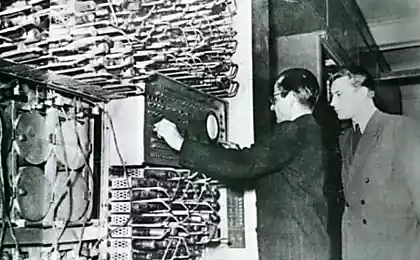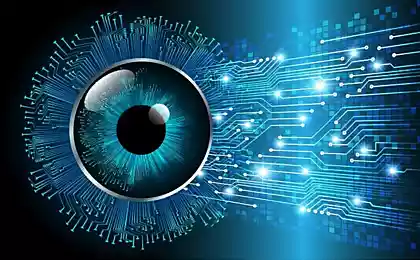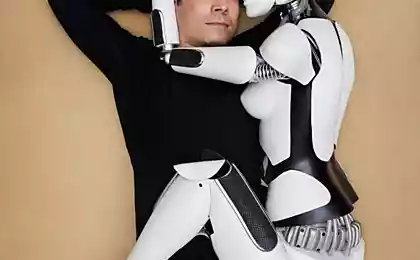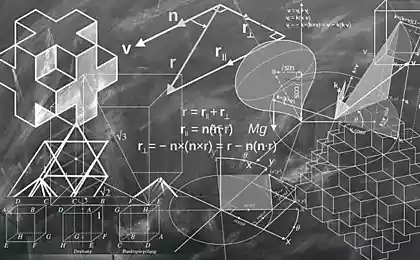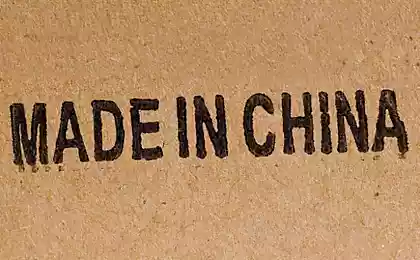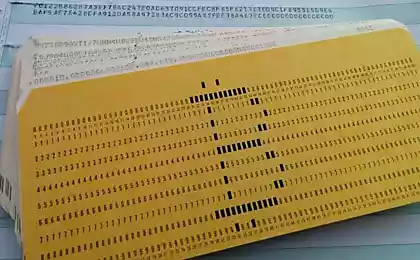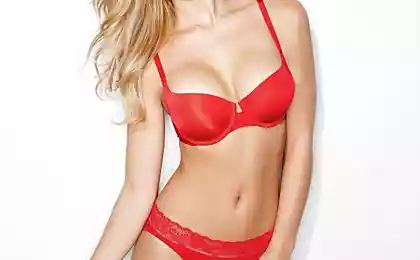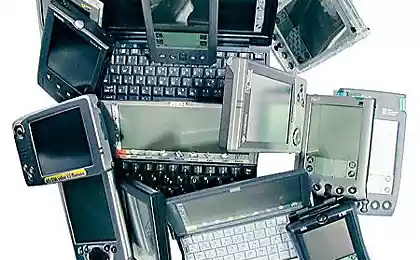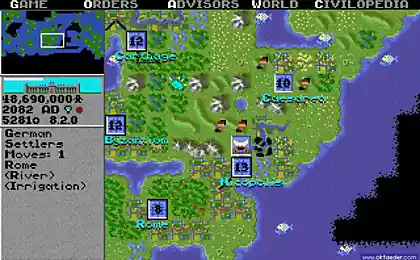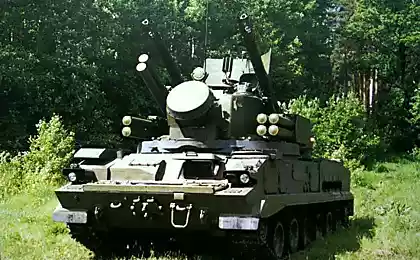1579
Another review of the private collection of rare computing
Hello. My name Prokhorov. I - ham radio. My call sign - R2DGO. Like all amateurs, I carried away by a man, and one of the faces of my technical hobby - collecting rarity computing. I've been reading on Habrahabr all posts related to the topic of old computer hardware and History IT. And then, finally, I decided to publish my. Despite the fact that the articles on similar subjects Habré already and so are many, I hope, my still will bring something new.
In his first post, I decided to put a small description of my collection. On the first slide - Apple II plus - the oldest and most valuable exhibit, personally acquired and brought from America: release date - 1979. Besides, I have it able to receive and transmit RTTY and Morse code, you can work on it in the broadcast digital modes with other hams.
Main technical characteristics:
- MOS Technology 6502 processor running at a clock frequency of 1 MHz
- RAM has a capacity of 48 kilobytes
- ROM has a volume of 8 kilobytes, and contains a program monitor and interpreter Applesoft Basic, developed by Microsoft.
On the screen - the simplest example of a program in BASIC - «Hello world»:
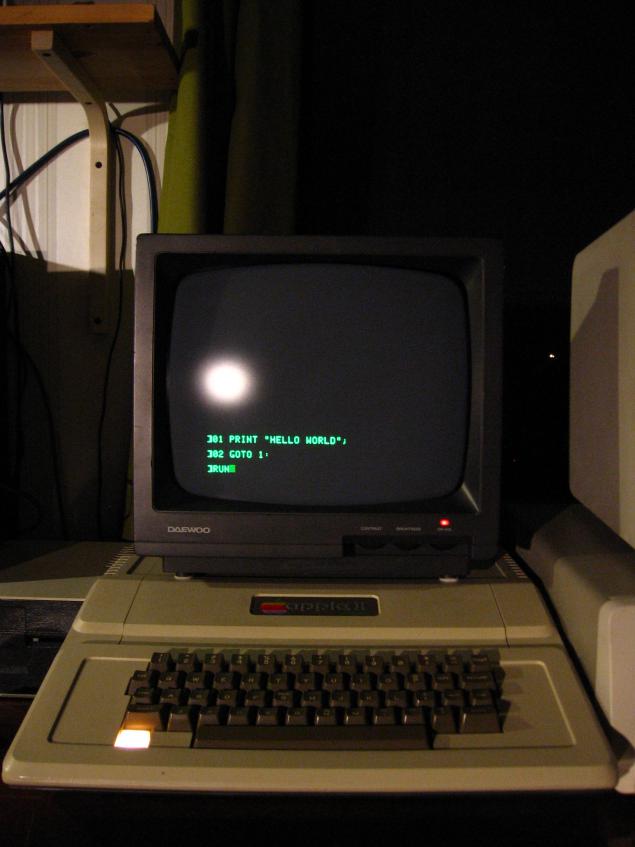
The next exhibit - IBM PC / XT (aka IBM 5160) of 1983 (judging by marking chips):
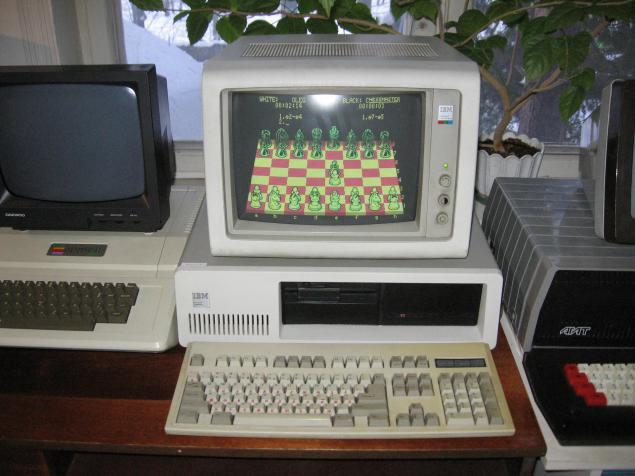
I got hold of him on his work, in one of the Moscow Research Institute, where he was a "island of lost ships" from discarded computers. On the case proudly indicated: made in UK (it will not any there Chinese assembly).
The monitor did not work at first, but after soldering the dried electrolytic capacitor in the power supply immediately lit up.
Established DOS and created a small collection of retro toys: the original Tetris Soviet written Pajitnov; Ms PACMAN; Prince of Persia; Alley cat; and so on. d. (collection gradually replenished, because the hard drive is not full volume of 20 megabytes.
Main technical characteristics:
- CPU INTEL 8088 clocked at 4, 77 MHz;
- RAM up to 640 Kbytes;
- ROM contains the IBM PC BASIC;
- MFM hard drive volume 20 megabytes;
- Drive for 5-inch floppy volume of 360 Kilobytes.
Classic Mac:
This is one of the classic "Macs» - Macintosh plus 1990 of release, in this instance set the maximum amount of memory - much as much as 4 megabytes! At the time, this thing was the epitome of the vertices of technologies and admired much more than iPhones today ... Yes, yes, since long before the advent of Windows for Macintosh was already a graphical user interface with windows and mouse; and in general, as well as all the apple, the computer was "at the height" is not only technically, but also thanks to its simple and concise, but something special and unique design.
Main technical characteristics:
- Processor: Motorola 68000 clocked at 8 MHz;
- RAM: 1 MB (expandable to 4 Mbytes);
- ROM: Contains the PO, you need to boot from a floppy disk;
- Drive for 3, 5-inch floppies (even those sold today), with at its special format floppies to 800 kilobytes, the whole "makintoshny" software adapted to work with these carriers.
Particular attention should be paid to domestic computers (as they were called - personal computers):
This - Agate 9 from my home near Moscow schools; on him at the time to learn the basics of programming pioneers and Computing:
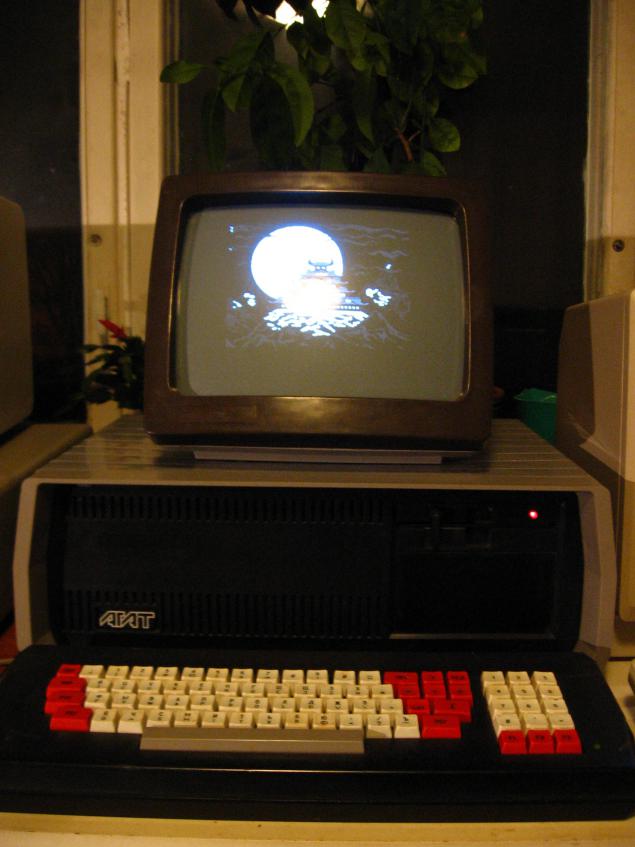
By the way, when I was in school there were already 286 th car (which was soon replaced immediately on Pentium-III's in my opinion).
Agate is still considered the first Soviet personal computer, a pleasure to have this exhibit. Agatha actually represent themselves practically clones of the aforementioned Apple II, although fully compatible with it were not, with many imported machines put 6502 Mos Technology, carefully smooth chip marking sandpaper, and on the concept of signing short and clear - "microprocessor microcircuit" .
Main technical characteristics:
- 6502 processor running at a clock frequency of 1 MHz;
- RAM up to 128 Kbytes;
- 2 kilobytes of ROM volume contains only the system monitor;
- FDD (floppy drive for 5-inch floppy disks in volume 840 Kbytes).
And this is - Search - domestic IBM-compatible computer that it even can run MS-DOS, that's only drive controller razdobudu ...
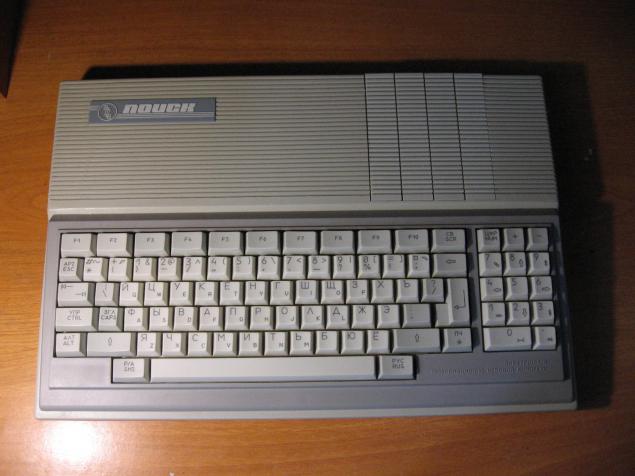
Exhibit got me a gift brand new, fully loaded, that pleases.
Main technical characteristics:
- Processor: KM1810VM88 (Soviet equivalent INTEL 8088) operates at a frequency of 5 MHz;
- RAM has a capacity of 128 KB;
- ROM has a volume of 8 kilobytes, and contains BIOS; when the bootloader starts, which displays a menu where invited to choose boot method (from tape or from an external ROM). Even the basic need to download a tape.
And one more representative of the domestic computer technology - 0010 BC:

This copy is promoted in 1987. This computer and other modifications are also equipped with many schools and other educational institutions (and even universities - my hobby started when I saw this computer at the Department of General and Inorganic Chemistry, Faculty of Biology and Chemical MPGU where I studied). At the current LCD-screen, connected to video output - is a development combined cellular automaton Conway "Life", vverhu- counters generations and the number of cells in a given generation. Despite its low-key name (BC stands for "home computer"), it's pretty serious machine that is compatible with the legendary DEC PDP-11 assembly level, and it can run on UNIX. It is with the use of such computers February 14, 1987 was held the first in the USSR digital QSO (radio communication) between two radio amateurs - UA3CR and UZ3AXJ. Before this was certainly a teletype, but it was just the first computer radio allows you to send any files and data.
Main technical characteristics:
- Processor: 1801VM1 clocked at 3 MHz;
- RAM has a capacity of 32 kilobytes;
- ROM - can vary depending on the configuration (left behind otodvizhnoy curtain has access to the socket with a ROM chip on the board - in my case, in addition to the ROM monitor sewn "Vilnius BASIC»).
Homemade clone of ZX Spectrum. Such computers are currently collected many hams (because of sufficient simplicity scheme, the minimum number of chips scarce and, therefore, - the possibility of recurrence), though the same BC or Agate were very expensive; Because of these facts it is the "Join" gained huge popularity among the people.
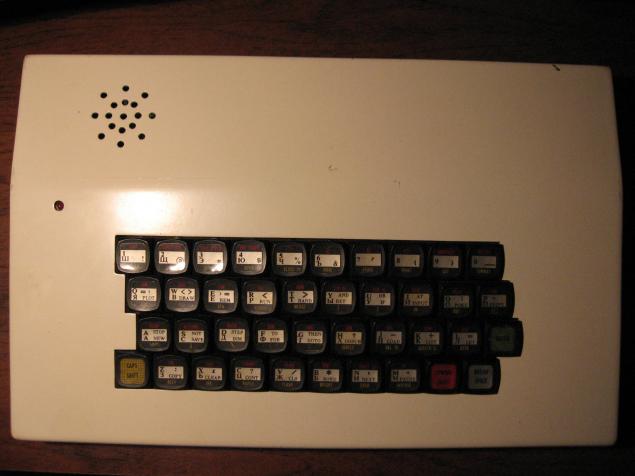
The body is made of very high quality foil fiberglass, all elements on the rear side are soldered together with tin (!) - A truly amateur assembly:
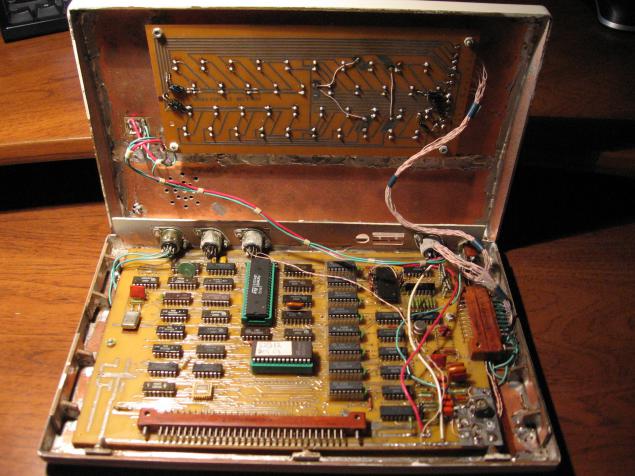
Another clone of the Spectrum, this time to the factory:

This - "Synthesis-M", one of the many mass-produced clones of Spectrum in the USSR, it is clear that the developers wanted to achieve not only complete software compatibility with the original, but also to repeat the style and design of the corporate body sinklerovskoy.
Main technical characteristics of the computer ZX Spectrum:
- CPU: Z80, running at a clock frequency of 3, 5 MHz;
- RAM has a capacity of 48 kilobytes;
- ROM volume contains 16 kilobytes Sinclair BASIC;
- For APIS and reading programs used household tape cassette recorder.
Are you still not tired? Then a couple more interesting things:
Japanese computer standard MSX:
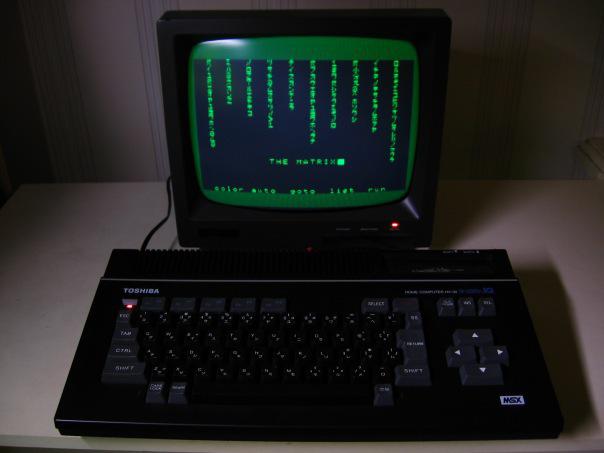
That's what inspired the movie "The Matrix».
Main technical characteristics:
- CPU: Z80;
- RAM has a capacity of 64 kilobytes;
- ROM contains the MSX BASIC and funny character generator with Japanese characters.
Soviet calculator "Iskra - 111" on the chips low degree of integration with the indicator on the discharge lamps (known in English literature as «nixie-tubes»):
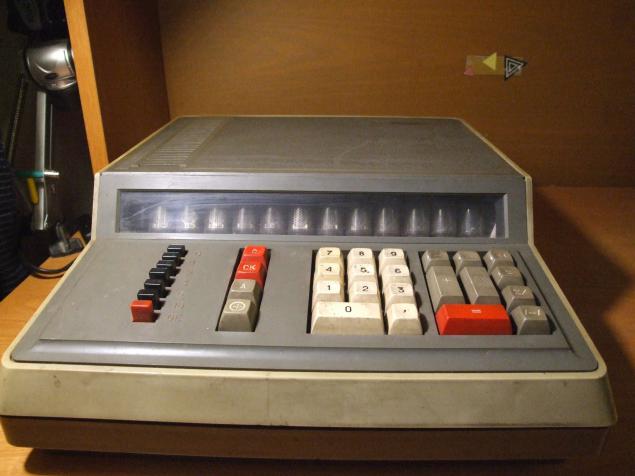
The calculator is spoiled PSU - is a repair.
Retro-modding:

Inside:
- INTEL 80386 @ 33MHz;
- 4 megabytes of RAM;
- MFM-40 megabyte hard drive;
- VGA-video controller.
General view of the exhibition:
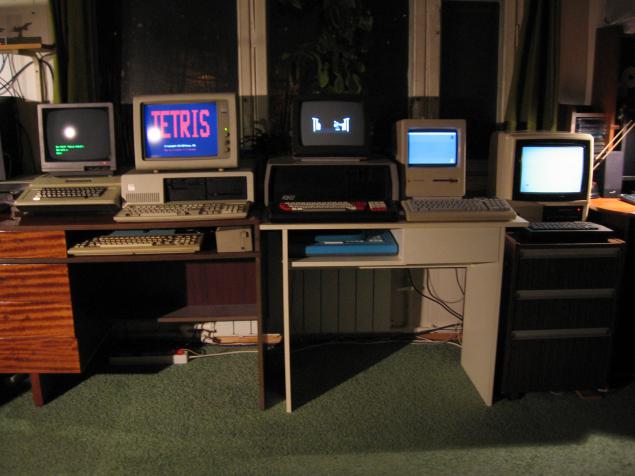
Actually keeper collection:
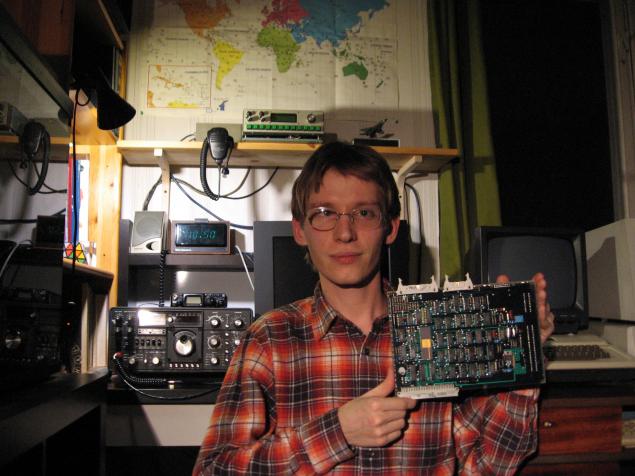
Thanks for udelёnnoe attention, I hope it was interesting.
In the future, I plan to write some more articles that will be discussed in more detail each exhibit, as well as aspects of its real and possible use in amateur radio.
Source: habrahabr.ru/post/239319/
In his first post, I decided to put a small description of my collection. On the first slide - Apple II plus - the oldest and most valuable exhibit, personally acquired and brought from America: release date - 1979. Besides, I have it able to receive and transmit RTTY and Morse code, you can work on it in the broadcast digital modes with other hams.
Main technical characteristics:
- MOS Technology 6502 processor running at a clock frequency of 1 MHz
- RAM has a capacity of 48 kilobytes
- ROM has a volume of 8 kilobytes, and contains a program monitor and interpreter Applesoft Basic, developed by Microsoft.
On the screen - the simplest example of a program in BASIC - «Hello world»:

The next exhibit - IBM PC / XT (aka IBM 5160) of 1983 (judging by marking chips):

I got hold of him on his work, in one of the Moscow Research Institute, where he was a "island of lost ships" from discarded computers. On the case proudly indicated: made in UK (it will not any there Chinese assembly).
The monitor did not work at first, but after soldering the dried electrolytic capacitor in the power supply immediately lit up.
Established DOS and created a small collection of retro toys: the original Tetris Soviet written Pajitnov; Ms PACMAN; Prince of Persia; Alley cat; and so on. d. (collection gradually replenished, because the hard drive is not full volume of 20 megabytes.
Main technical characteristics:
- CPU INTEL 8088 clocked at 4, 77 MHz;
- RAM up to 640 Kbytes;
- ROM contains the IBM PC BASIC;
- MFM hard drive volume 20 megabytes;
- Drive for 5-inch floppy volume of 360 Kilobytes.
Classic Mac:
This is one of the classic "Macs» - Macintosh plus 1990 of release, in this instance set the maximum amount of memory - much as much as 4 megabytes! At the time, this thing was the epitome of the vertices of technologies and admired much more than iPhones today ... Yes, yes, since long before the advent of Windows for Macintosh was already a graphical user interface with windows and mouse; and in general, as well as all the apple, the computer was "at the height" is not only technically, but also thanks to its simple and concise, but something special and unique design.
Main technical characteristics:
- Processor: Motorola 68000 clocked at 8 MHz;
- RAM: 1 MB (expandable to 4 Mbytes);
- ROM: Contains the PO, you need to boot from a floppy disk;
- Drive for 3, 5-inch floppies (even those sold today), with at its special format floppies to 800 kilobytes, the whole "makintoshny" software adapted to work with these carriers.
Particular attention should be paid to domestic computers (as they were called - personal computers):
This - Agate 9 from my home near Moscow schools; on him at the time to learn the basics of programming pioneers and Computing:

By the way, when I was in school there were already 286 th car (which was soon replaced immediately on Pentium-III's in my opinion).
Agate is still considered the first Soviet personal computer, a pleasure to have this exhibit. Agatha actually represent themselves practically clones of the aforementioned Apple II, although fully compatible with it were not, with many imported machines put 6502 Mos Technology, carefully smooth chip marking sandpaper, and on the concept of signing short and clear - "microprocessor microcircuit" .
Main technical characteristics:
- 6502 processor running at a clock frequency of 1 MHz;
- RAM up to 128 Kbytes;
- 2 kilobytes of ROM volume contains only the system monitor;
- FDD (floppy drive for 5-inch floppy disks in volume 840 Kbytes).
And this is - Search - domestic IBM-compatible computer that it even can run MS-DOS, that's only drive controller razdobudu ...

Exhibit got me a gift brand new, fully loaded, that pleases.
Main technical characteristics:
- Processor: KM1810VM88 (Soviet equivalent INTEL 8088) operates at a frequency of 5 MHz;
- RAM has a capacity of 128 KB;
- ROM has a volume of 8 kilobytes, and contains BIOS; when the bootloader starts, which displays a menu where invited to choose boot method (from tape or from an external ROM). Even the basic need to download a tape.
And one more representative of the domestic computer technology - 0010 BC:

This copy is promoted in 1987. This computer and other modifications are also equipped with many schools and other educational institutions (and even universities - my hobby started when I saw this computer at the Department of General and Inorganic Chemistry, Faculty of Biology and Chemical MPGU where I studied). At the current LCD-screen, connected to video output - is a development combined cellular automaton Conway "Life", vverhu- counters generations and the number of cells in a given generation. Despite its low-key name (BC stands for "home computer"), it's pretty serious machine that is compatible with the legendary DEC PDP-11 assembly level, and it can run on UNIX. It is with the use of such computers February 14, 1987 was held the first in the USSR digital QSO (radio communication) between two radio amateurs - UA3CR and UZ3AXJ. Before this was certainly a teletype, but it was just the first computer radio allows you to send any files and data.
Main technical characteristics:
- Processor: 1801VM1 clocked at 3 MHz;
- RAM has a capacity of 32 kilobytes;
- ROM - can vary depending on the configuration (left behind otodvizhnoy curtain has access to the socket with a ROM chip on the board - in my case, in addition to the ROM monitor sewn "Vilnius BASIC»).
Homemade clone of ZX Spectrum. Such computers are currently collected many hams (because of sufficient simplicity scheme, the minimum number of chips scarce and, therefore, - the possibility of recurrence), though the same BC or Agate were very expensive; Because of these facts it is the "Join" gained huge popularity among the people.

The body is made of very high quality foil fiberglass, all elements on the rear side are soldered together with tin (!) - A truly amateur assembly:

Another clone of the Spectrum, this time to the factory:

This - "Synthesis-M", one of the many mass-produced clones of Spectrum in the USSR, it is clear that the developers wanted to achieve not only complete software compatibility with the original, but also to repeat the style and design of the corporate body sinklerovskoy.
Main technical characteristics of the computer ZX Spectrum:
- CPU: Z80, running at a clock frequency of 3, 5 MHz;
- RAM has a capacity of 48 kilobytes;
- ROM volume contains 16 kilobytes Sinclair BASIC;
- For APIS and reading programs used household tape cassette recorder.
Are you still not tired? Then a couple more interesting things:
Japanese computer standard MSX:

That's what inspired the movie "The Matrix».
Main technical characteristics:
- CPU: Z80;
- RAM has a capacity of 64 kilobytes;
- ROM contains the MSX BASIC and funny character generator with Japanese characters.
Soviet calculator "Iskra - 111" on the chips low degree of integration with the indicator on the discharge lamps (known in English literature as «nixie-tubes»):

The calculator is spoiled PSU - is a repair.
Retro-modding:

Inside:
- INTEL 80386 @ 33MHz;
- 4 megabytes of RAM;
- MFM-40 megabyte hard drive;
- VGA-video controller.
General view of the exhibition:

Actually keeper collection:

Thanks for udelёnnoe attention, I hope it was interesting.
In the future, I plan to write some more articles that will be discussed in more detail each exhibit, as well as aspects of its real and possible use in amateur radio.
Source: habrahabr.ru/post/239319/
